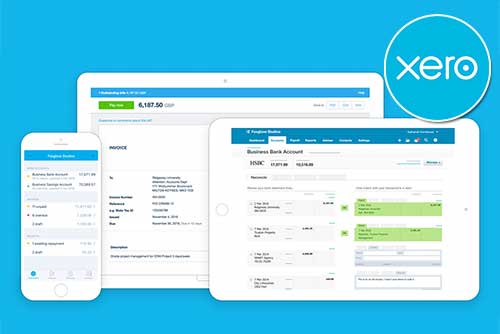What is an Overhead: Understanding Costs in Business
As a significant component of your business expenses, overhead costs can profoundly impact your profitability and overall financial health. From rent and utilities to administrative expenses, grasping the intricacies of overhead is essential for making informed decisions and optimising your operational efficiency.
In this article, we’ll define overhead costs and the various types, discuss the significance of overhead costs in business, and explore strategies for managing overhead costs.
What is an Overhead?
Overhead costs refer to the ongoing expenses a business incurs to operate, which are not directly tied to producing a specific product or service. These costs are essential for day-to-day operations but cannot be directly attributed to a single project or revenue stream. Overheads are usually divided into two main categories: fixed and variable. Fixed overheads remain constant, such as rent, utilities, and insurance, while variable overheads fluctuate depending on the level of business activity, like office supplies and administrative salaries.
Overhead and Allowable Expenses
Allowable expenses, particularly in the context of tax and accounting, are costs that a business can claim as deductions against its revenue to reduce taxable income. For a business to benefit from these deductions, the expenses must be directly related to the production of income or the operation of the business. In the UK, allowable expenses can include staff salaries, office rent, utilities, travel costs, and the costs of raw materials used in production. However, not all costs are allowable. For instance, personal expenses, fines, and certain capital expenditures like buying land or buildings are not considered allowable.
In some industries, such as oil and gas exploration, specific rules apply to the allocation of overhead costs. For example, costs incurred for support functions (e.g., administrative staff, secretarial services) may be allocated to various projects based on time spent, but only if these costs are directly related to the project’s purpose. Overheads that are too remote or unrelated to the project, such as costs associated with maintaining the company’s corporate image or long-term corporate planning, are not typically allowable under tax regulations.
To ensure compliance and avoid unnecessary costs, businesses must carefully track and allocate their overheads and allowable expenses. This includes maintaining detailed records and justifying the allocation of expenses for tax purposes. Having a clear understanding of which overheads are allowable ensures that a business can maximise its eligible deductions, ultimately reducing its taxable income and improving profitability.
Types of Overhead Costs
Understanding the different types of overhead costs is crucial for budgeting, cost analysis, and decision-making within a business. Here are the main types:
- Fixed Overhead Costs: These are expenses that remain constant regardless of the level of production or sales. Examples include rent, insurance premiums, and salaries for permanent staff. Fixed overhead costs do not fluctuate with changes in business activity.
- Variable Overhead Costs: These expenses fluctuate in direct proportion to changes in business activity or production levels. Examples include raw materials, direct labour costs, and utilities that vary based on production output or sales volume.
- Semi-variable Overhead Costs: Some portion of the cost remains fixed regardless of business activity, while another portion varies with production or sales levels. For example, maintenance costs may include a fixed component (e.g., annual service contracts) and a variable component (e.g., repair costs based on usage). Utilities may have a fixed base rate plus variable charges based on usage.
Overhead Costs Examples
Overhead costs are diverse and can vary significantly depending on the nature of your business. Common overhead costs include:
- Rent: The cost of leasing or renting office space, warehouses, or other facilities.
- Utilities: Expenses related to electricity, water, heating, and other essential services.
- Salaries and Benefits: Wages, salaries, and benefits for administrative staff, management, and other employees not directly involved in production.
- Insurance: Premiums for business insurance coverage, including property insurance and liability insurance.
- Office Supplies: Costs associated with purchasing office supplies, such as stationery, printer ink, and computer accessories.
- Maintenance and Repairs: Expenses for maintaining and repairing equipment, facilities, and other assets.
- Marketing and Advertising: Costs related to promoting the business, including advertising campaigns, marketing materials, and website maintenance.
- Professional Fees: Fees paid to consultants, lawyers, accountants, and other professional services.
Managing Overhead Costs
Overhead costs can significantly impact a company’s bottom line. However, with strategic planning and careful management, reducing these costs and improving your business’s financial health is possible.
Strategies for Reducing Overhead Costs
Reducing overhead costs is essential for improving profitability and ensuring the long-term sustainability of a business. Here are some strategies to consider:
- Regularly Review Expenses: Conduct regular audits of your overhead expenses to identify areas where costs can be reduced or eliminated. Look for inefficiencies, unnecessary expenditures, and opportunities for cost savings.
- Negotiate with Suppliers: Negotiate better terms with suppliers, such as discounts for bulk purchases or longer payment terms. Consider switching suppliers if you can find better deals elsewhere.
- Outsource Non-Core Functions: Consider outsourcing non-core functions, such as accounting, IT support, or customer service, to third-party providers. Outsourcing can help reduce overhead costs by eliminating the need for in-house staff and infrastructure.
- Implement Technology Solutions: Invest in technology solutions that automate repetitive tasks, improve productivity, and reduce manual labour. For example, accounting software can streamline financial processes.
- Optimise Energy Usage: Implement energy-saving measures to reduce utility costs, such as installing energy-efficient lighting, heating, and cooling systems. Encourage employees to conserve energy and minimise waste.
- Embrace Remote Working: Many overhead costs, such as utility bills and rent, are tied to maintaining a physical office. By shifting to a remote-first work culture, you can significantly reduce these costs.
The Balance Between Overheads and Business Growth
While it’s crucial to keep overheads low, it’s equally important not to stifle growth opportunities. A business must be willing to invest in areas that promise a return on investment, even if it means accepting higher overheads in the short term.
For instance, a company might decide to invest in a more expensive, but more efficient, piece of equipment. The initial cost is high, but the long-term savings in labour and maintenance costs could outweigh the initial overhead. Similarly, investing in employee training might seem like an unnecessary overhead, but the increased productivity and reduced turnover can lead to significant savings in the long run.
However, it’s important to remember that not all overheads are created equal. Some overhead costs, such as rent and utilities, are necessary for the day-to-day operation of the business. Others, like extravagant office decor or unnecessary software upgrades, might not contribute to the bottom line and can be reduced or eliminated.
The Impact of Overhead Costs on Business Success
Understanding and managing overhead costs is a critical aspect of running a successful business. By regularly reviewing these costs and implementing effective reduction strategies, businesses can improve their financial health and position themselves for sustainable growth. However, it’s crucial to maintain a balance, ensuring that cost reductions do not negatively impact the business’s operations or its employees.





















